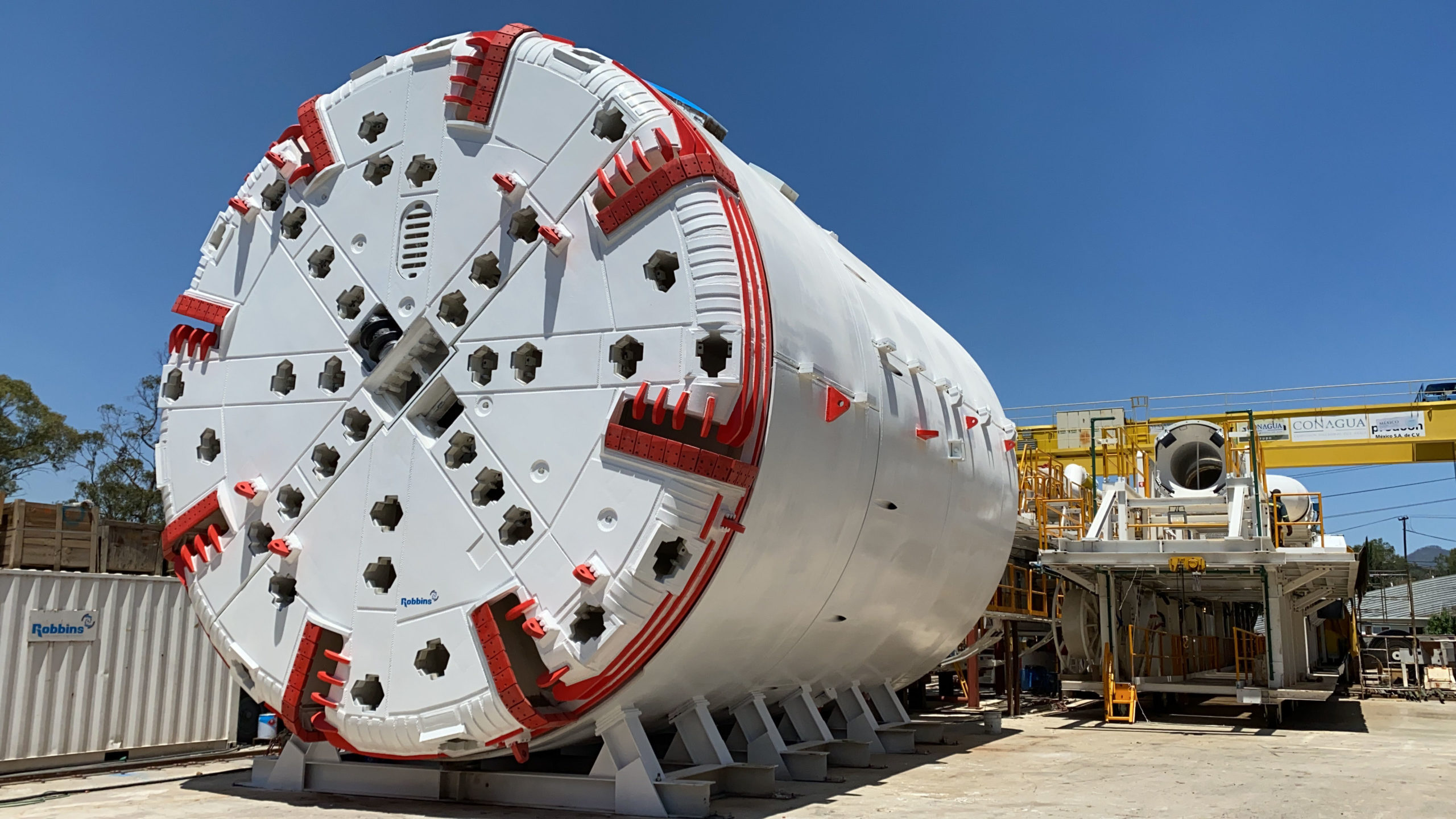新闻及资讯
Robbins Single Shield completes Canada’s Largest Outfall
On March 3, 2022, a 7.95 m (26.1 ft) diameter Robbins Single Shield TBM completed a record-setting run below Lake Ontario. The machine, for the Southland/Astaldi JV, bored 3.5 km (2.2 mi) in sedimentary rock for the Ashbridges Bay Outfall in Toronto, Ontario, Canada.

The 3.5 km (2.2 mi) long Ashbridges Bay Outfall Tunnel is Canada’s largest outfall and connects to 50 risers in Lake Ontario.
The machine launched in March 2021 from an 85 m (280 ft) deep, 16 m (53 ft) diameter shaft and began its bore in predominantly shale, with limestone, siltstone and sandstone. During its excavation, the TBM and its experienced crew bored a city-wide record of 30 rings in one day, or about 47 m (154 ft) of advance. The machine and crew surpassed a previous best day of 21 rings at a project with similar specifications. “We are proud to have completed another successful tunnel with Robbins and greatly appreciate their field service support,” said Joe Savage, Project Manager for Southland.
“This is a wonderful type of geology for our machines. During the entire excavation, a total of 7 cutters were changed. The wear behavior is incredible, between 2 and 5 mm, and everyone is amazed by the cutter performance,” said Alfredo Garrido of Robbins Field Service.
The crew had been operating the machine in two shifts of 12 hours from Monday to Friday. A Robbins continuous conveyor system including vertical conveyor transported muck behind the machine. “Every 25 machine cycles, it was necessary to stop the excavation to probe drill hole in front of the cutterhead to check for possible water. This drilling was done basically every day, stopping the machine for a few hours, but it was very necessary,” said Garrido.
The last kilometer of tunnel, bored below a series of 50 risers under Lake Ontario, was challenging but ultimately successful. “The team really worked together to overcome some tough ground conditions and high water inflows in the tunnel,” said Savage.

The Ashbridges Bay Outfall won accolades from the Tunnelling Association of Canada (TAC) in late 2021 for its all-remote machine acceptance, the first of its kind, enacted due to the Covid-19 pandemic.
The success of the TBM is just one cause for celebration. The project won accolades from the Tunnelling Association of Canada (TAC) in late 2021 for its all-remote machine acceptance enacted due to the Covid-19 pandemic. The machine acceptance, the first of its kind, enabled communication and confirmation between the machine’s assembly location in Mexico, suppliers in the U.S. and those involved in Canada. “It was a challenge for all the people involved due the pandemic travel restrictions; however, due to good planning and communication we were able to go through the Acceptance Test successfully. I think this might become quite common in the near future,” said Robbins Project Manager Javier Alcala.
The completed outfall will connect to the 50 in-lake risers to enable efficient dispersion of treated effluent over a wide area of the lake, making it the largest outfall in the country. The project for the City of Toronto will improve the city’s shoreline and Lake Ontario’s water quality by replacing a 70-year-old existing outfall.

 Close
Close  Menu
Menu 